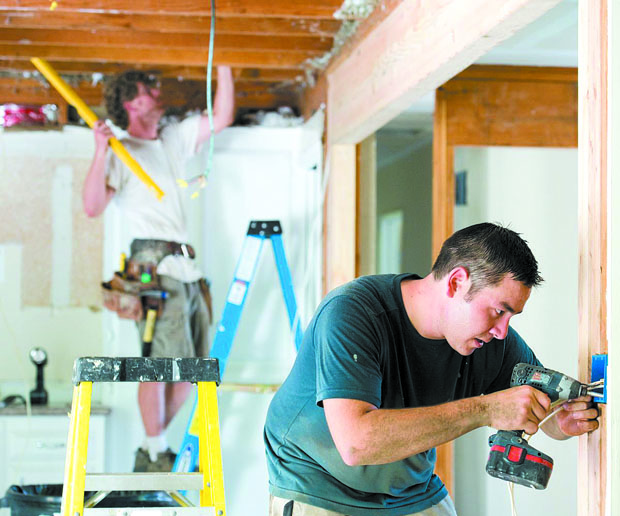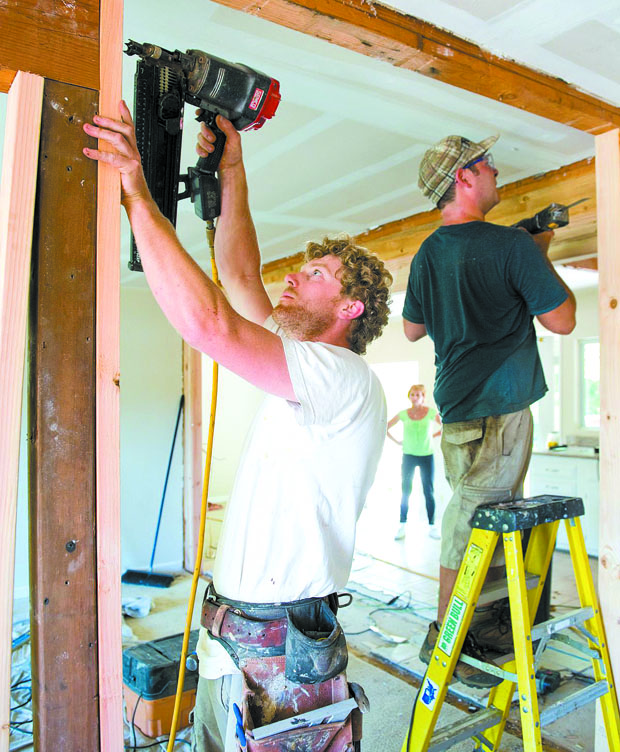The United States is a country of renovators and remodelers, judging from the steady growth of home improvement projects across the nation in recent years.
People are remodeling their homes at historically high rates according to the National Association of Homebuilders. Many of these projects are complex and expensive, and too often people neglect to fully protect their assets and bank accounts because they fail to properly assess the risks of major home renovations.

There are a few basic things homeowners need to think about before, during and after renovation that will go a long way toward protecting their little piece of the American Dream. One of the most important tasks comes well before even the first nail is hammered.
“It always goes back to choosing the right contractor,” said Mark McCormick, technical director of personal risk services at Fireman’s Fund Insurance Company. “Embarking on these kinds of projects is an emotional experience, but it’s important to objectively vet your contractors before making a decision about who will be working in your home.”
You can’t just pick your contractor at random out of the Yellow Pages or hire them simply because they might have a nice website. Make sure they’ve been in business for a while — 10 or more years is often a good gauge.
While not a guarantee of trustworthiness, business longevity shows at least a certain level of stability. Also, companies that have been around longer tend to have connections in the wider community and established reputations that can be checked out. Ask neighbors and friends for their thoughts and get recommendations from people who have been through a remodel.
Many times, fly-by-night contractors will only give out cell phone numbers, which is a big red flag, so make sure they have a physical address. Also, ask for proof that they are properly licensed and carry the right insurance for themselves and their subcontractors.
“It’s always good to get three to five contractors into the vetting process,” McCormick said. “There may be some who have been around for only a year, or you may not be happy with their subs, the price, the scope of work or how they approach your home. You want them to do the work in your castle as if they owned it themselves.”

An often-neglected item on the pre-project checklist is making sure your insurance is up to the task. Before work begins, contact your agent and ask if you need to adjust your liability limits or if there is anything you can do to minimize your risk. Larger, more complex projects are inherently more risky, so the insurance company might suggest things like security fencing, cameras or — if the project is really big — a security guard.
“If homeowners neglect to tell their insurance agent about a renovation, it puts them at risk from a liability standpoint,” McCormick said. “People might be walking around on roofs, putting in swimming pools, using open flame, putting up siding, all kinds of things. If the policy holder talks to an agent about the scope of a project, the agent can advise an increase in liability coverage if it’s needed.”
Throughout the entire process, be sure to keep good records, including all receipts, plans, invoices, canceled checks and all agreements and correspondence with your contractors and subs. Once the remodel is complete, contact your insurance agent for a replacement cost calculation, adjusted to mirror the final project and accounting for the increased replacement value.
Remodeling tips for homeowners:
• Carefully vet contractors.
• Contact your insurance company and get advice about risk mitigation and liabilities.
• Make sure your contractor and sub-contractors have adequate liability insurance.
• Maintain good records of all agreements and transactions.
• Never leave valuable personal items in plain view during a project.

Change it up
Don’t give out home security system codes or house keys unless you absolutely have to — and know specifically who is getting those things! And be sure to change the codes and the locks after the project is done.
This article is courtesy of Brandpoint.